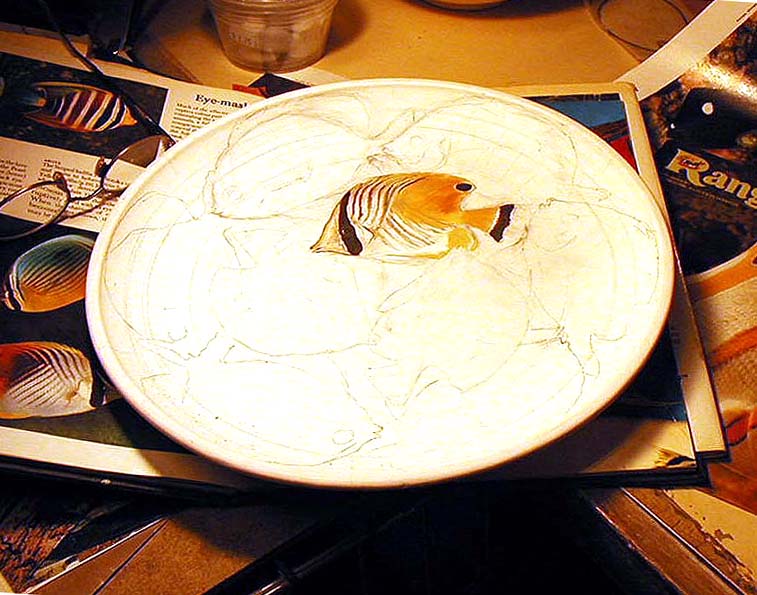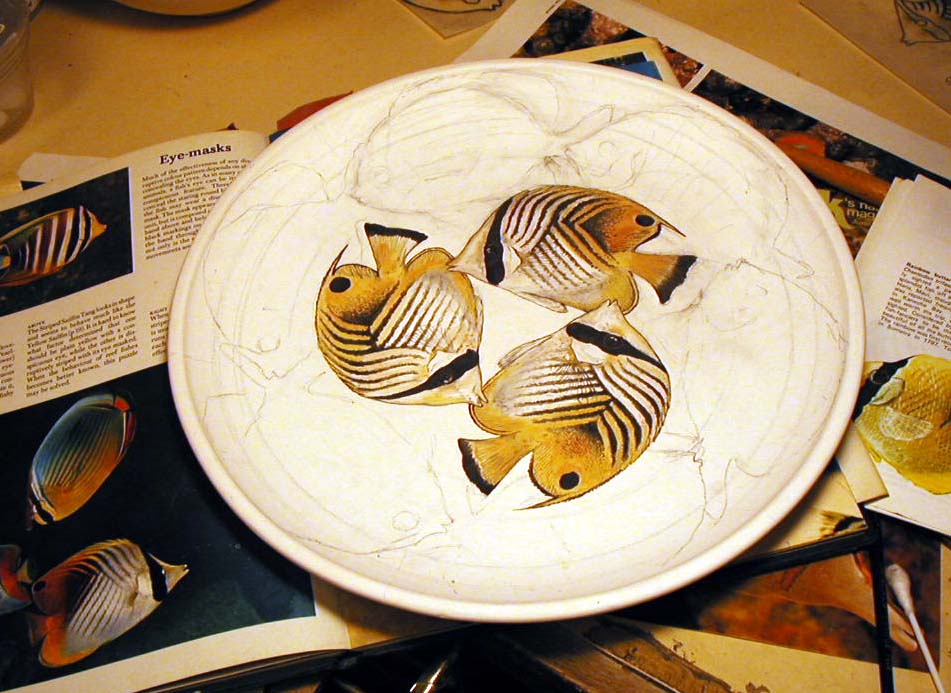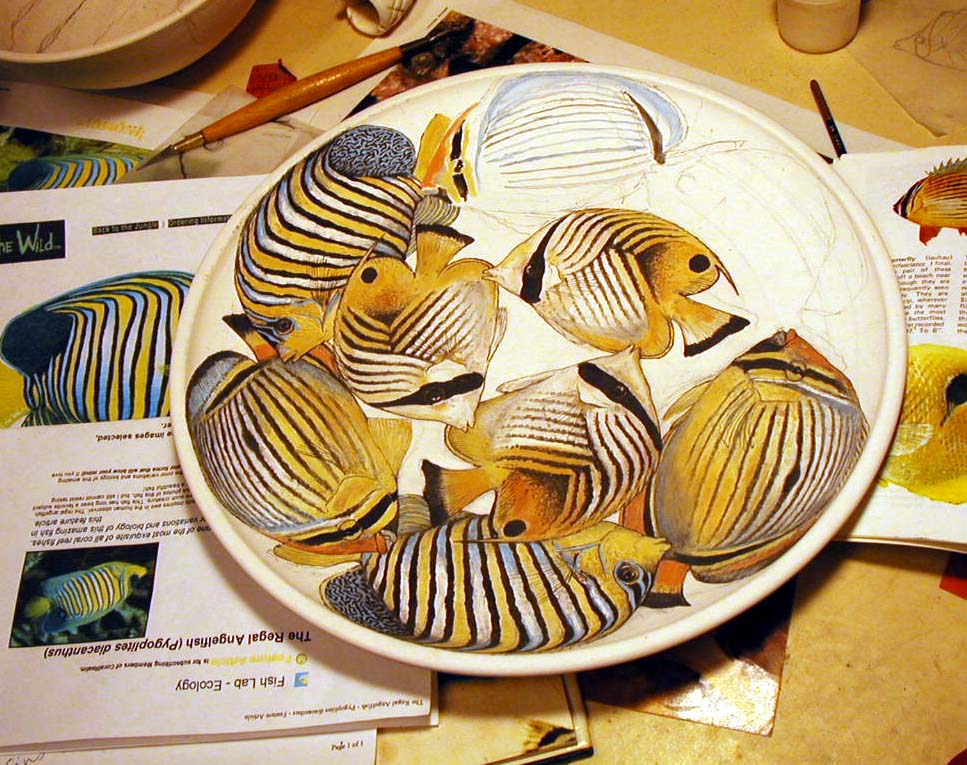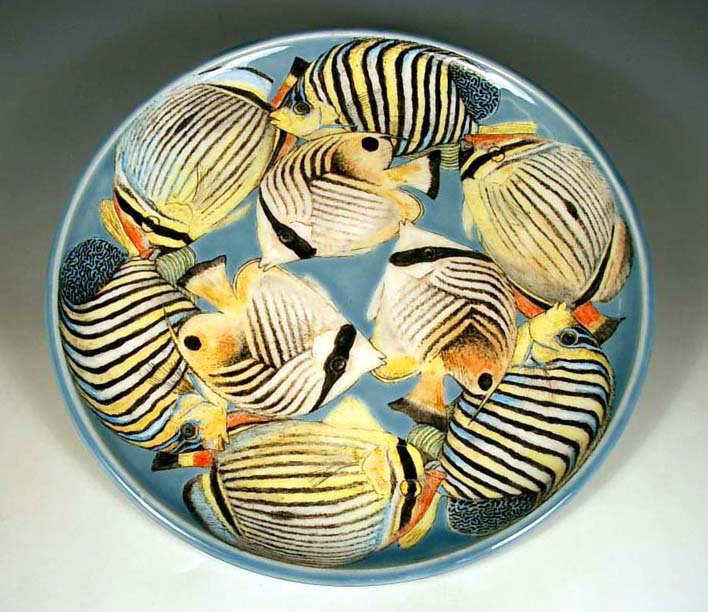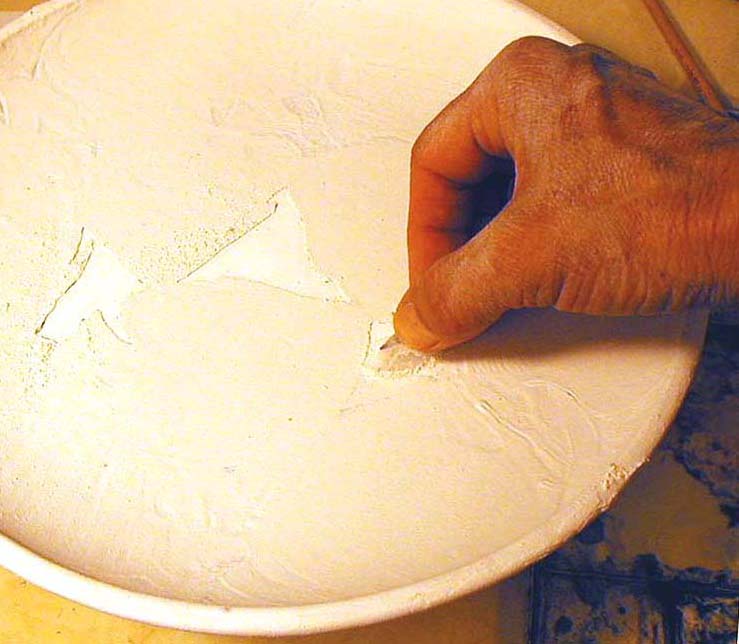
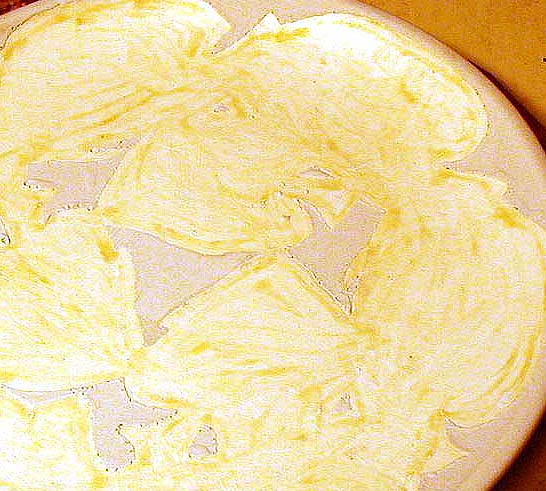
When I finished painting, I applied liquid latex between the fish to isolate the porcelain. Then I submerged the platter in transparent glaze. It's important to do this quickly so the glaze is thinly applied. If the glaze is too thick, the painting will lose definition. When the glaze was dry, I peeled off the latex. I painted wax resist over the transparent glaze, let it dry for a day, then dipped the platter in a blue glaze. If the blue glaze is too thick, it will blur into the edges of the fish; if it's too thin, the color will be weak. I cleaned up glaze drops on the wax and the edges between the two glazes. The pot was ready to fire.
|
